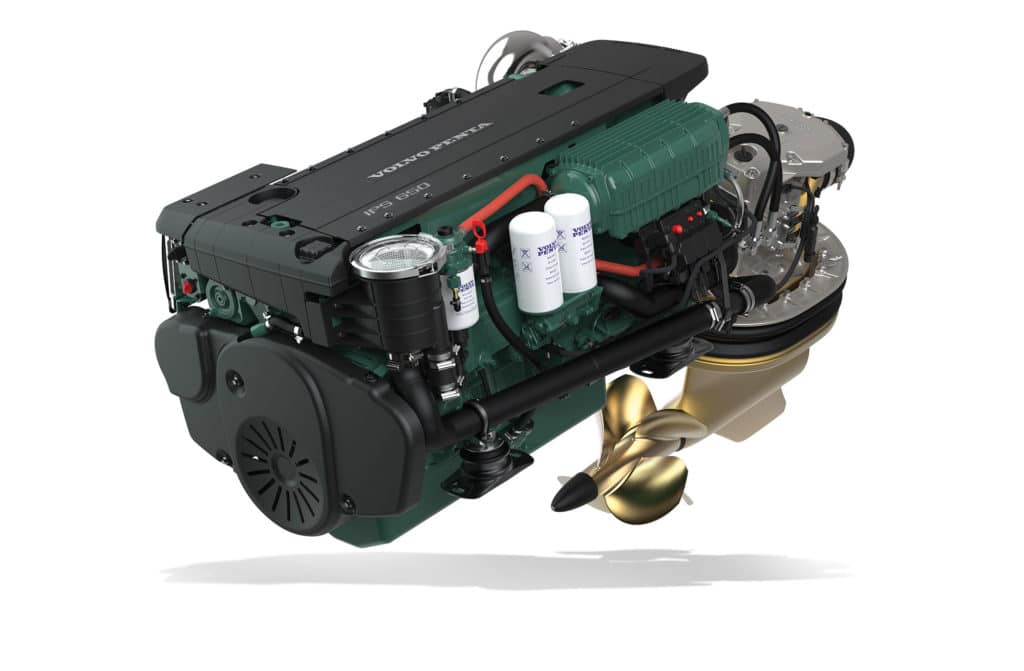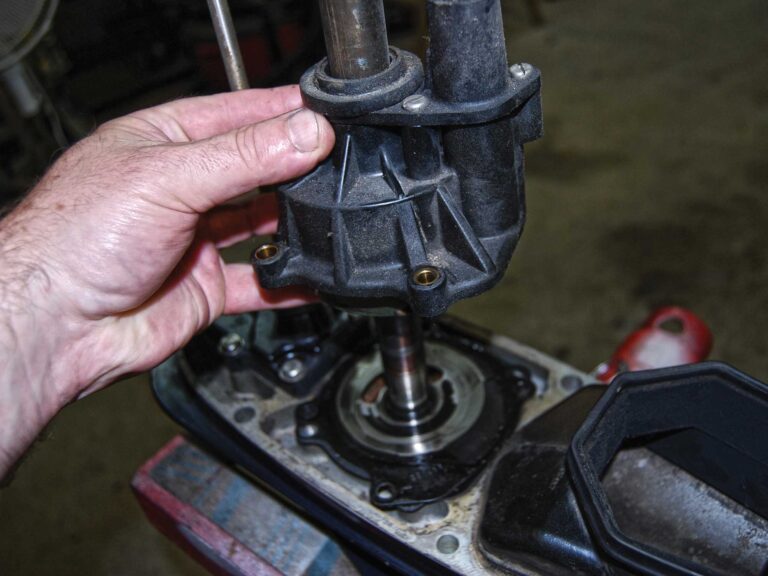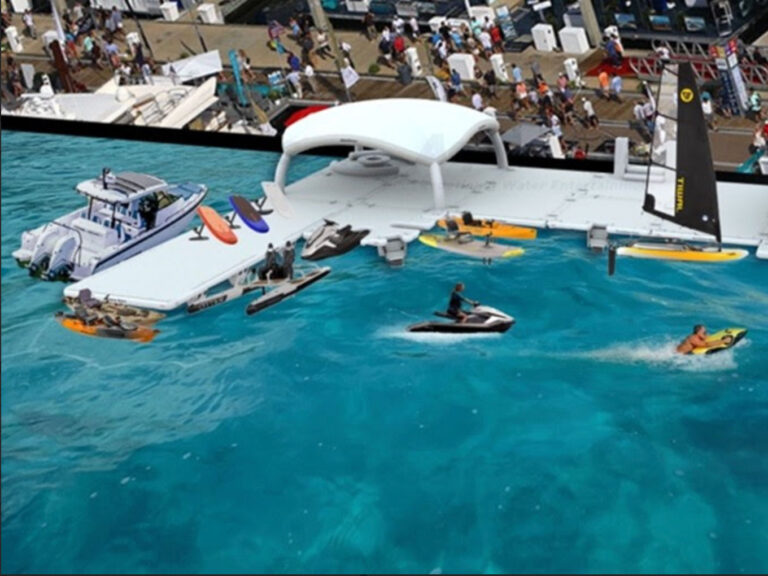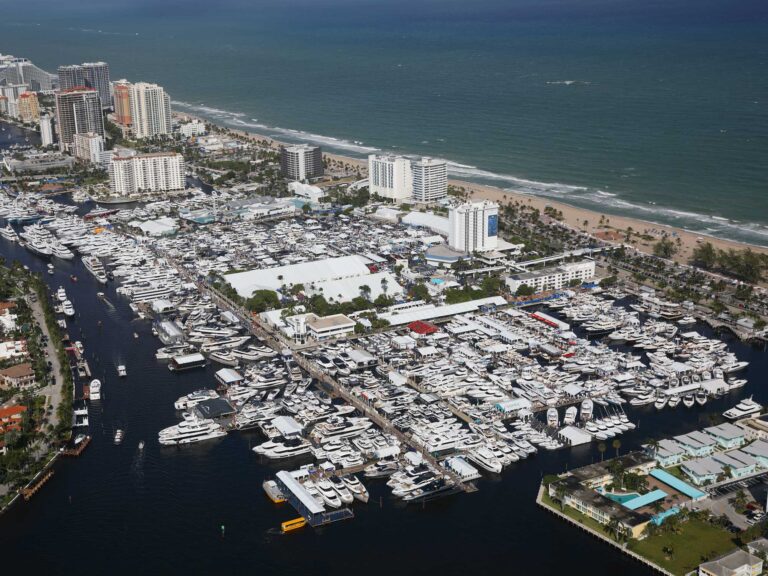
Leveraging manufacturing -expertise and command of technology, Volvo Penta debuts upgraded D4 and D6 diesel engines, a new DPI sterndrive, an upgraded IPS drive, and a new generation of its Electronic Vessel Control (EVC) system, all of which may change the way boaters discuss and compare marine power. These new marine propulsion systems tout cost-of-ownership advantages, and Volvo Penta goes beyond materials selection, revealing detailed manufacturing techniques to engender confidence in long-lasting reliability.
To prove these points, Volvo Penta flew me, along with a corps of other marine journalists, to its Krossholmen, -Sweden, test center and proving grounds, on the shores of the Kattegat, an arm of the North Sea near the Danish Straits. There, I ran the new engines and drives in a variety of craft, with the engineers who designed them at my side and at my disposal. I came away impressed, whether throttling hard into the chop from the helm of a Sargo 28 powered by a single 320 hp D4-320 DPI sterndrive, powering a -Jeanneau Prestige 460 with twin D6 IPS 650s onto plane, or spinning a Galeon 430 HTC powered by twin 480 hp D6 straight-shaft inboards in close-quarters -maneuvers.
The Engines
Volvo Penta builds the 3.7-liter D4 (150 to 320 hp) and the 5.4-liter D6 (300 to 480 hp) diesel engines for marine duty, rather than marinizing truck engines. Both offer the long-heralded Volvo Penta advantage of existing as part of a complete propulsion system from key switch to prop, whether utilized in inboard, sterndrive, water-jet or IPS variants. This makes for one-stop shopping when a boat owner needs parts and service.
The engines are said to burn between 1 and 7 percent less fuel than their antecedent generation and cost some 10 percent less to own. When asked just how Volvo Penta achieved these milestones, the engineering team answered directly and with copious examples. To wit, the common rail fuel-injection system now features higher pressure—2,000 bar, which is 25 percent higher than the previous 1,600 bar. Controlled by a new engine management -system, this enables more precise calibration and control of injection parameters, so the engines run even smoother and are more fuel-efficient. While other details—such as a fuel filter with a sensor, and a new a diamondlike carbon (DLC) coating on the piston pin that reduces friction and increases durability—proved cool, I was really wowed by some insight into the actual manufacturing environment. Utilizing practices such as pressurized assembly spaces to eliminate dust and grit in the air ensures the mating internal surfaces of moving parts start off with the best chance for long-term reliability. I mean, a boater shouldn’t underestimate the deleterious effects of an errant mote or shaving at 2,800 rpm—suffice to say, so-called “clean manufacturing” methods offer concrete merits. And the new boost/charge air system, with its larger supercharger and smoother handoff between supercharger and turbo, resulted in torque I could feel from the helm of the test boats.
Cost of ownership? Again, Volvo Penta engineering cites real items that a boater can relate to. For instance, the oil-change interval now stands at two years, compared to the prior standard of one year. Furthermore, a new gas-oil separator spins at 7,000 rpm to obviate the need for a replaceable crankcase oil filter. Examples such as these and more don’t live in isolation; they achieve the stated goals in concert with the clean-build process, the materials selection, and improvements in engine control and monitoring offered by the latest generation of EVC

EVC
The new EVC serves as the electronic backbone that controls and integrates the propulsion system into the whole boat. In line with Volvo Penta’s “easy boating” mantra, this generation of EVC helps boaters perform a variety of seemingly disparate functions, from docking the boat with the joystick to ensuring the engines are running properly with a new feature called On Board Maintenance Assistant. This informs owners of service dates, and keeps track of past servicing and diagnostic information with a real-time clock.
EVC also prefigures the boat for imminently anticipated future services, such as remote diagnostics and worldwide uploading of upgrades. Stay tuned.
The benefits EVC extends to sterndrive owners tie in with the reduced cost of ownership and maintenance, Volvo Penta promises.
New DPI Drive
Steer-by-wire is now standard on both single and twin installations of the new DPI drive—eliminating the need for hydraulic fluid at the helm and making available EVC features such as Low Speed (trolling, no-wake zones, etc.) and Dynamic Positioning System (DPS) to a wider range of applications. Yeah man, sterndrive boats can now be steered with a system similar to those found in high-end cars.
Read Next: Check out more of our Volvo Penta content!
A new hydraulic clutch (so, some hydraulics do remain) replaces the cone clutch. Together with electric steering, joystick docking functionality is improved. It also enables DPS to be introduced for boats with twin sterndrives, which automatically maintains a boat’s heading and position, even in strong currents or wind, conditions that tested true for me at Krossholmen. This makes it ideal when preparing to dock, holding position for certain fishing applications, waiting on a bridge opening, and more.
There are new prop seals, fewer consumable service parts and, like the engines, longer service intervals, all of which bolster the claim of easier boating with less cost of ownership.

IPS 10
The IPS drive series designation is 10, but will generally be marketed as IPS 600 or 650 when mated with a D6 engine of 440 or 480 hp. This latest iteration of IPS is manufactured using new tooling, even closer tolerances than before, and a work-hardened shell. Notably, Volvo Penta installs both pressure and temperature sensors on the gear-oil filters, to provide better monitoring and service. Additionally, gear oil can now be changed from -inside the boat, which saves boat owners money because they don’t have to schedule a short haul. New prop-shaft seals, like those on the DPI sterndrive, better protect the gears.
Volvo Penta’s latest offerings proved innovative, with tangible results supporting the stated benefits. They deserve close consideration from boat buyers.





